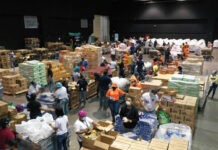NASA recently announced that astronauts Suni Williams and Butch Wilmore will not be returning from the International Space Station until at least June 26. This delay comes after the pair’s launch on June 6 aboard the Boeing Starliner, which was supposed to be a week-long mission. However, due to issues experienced by the spacecraft during its journey to the station, NASA has postponed their return twice in order to fully understand the situation.
The June 6 launch was already delayed once before, as NASA had to push back the Starliner debut mission on May 6 to replace a pressure regulation valve on the Atlas V rocket’s liquid oxygen tank. Despite these setbacks, the spacecraft encountered helium leaks and thruster malfunctions on its way to the ISS. This prompted the need for further analysis and testing before the astronauts can safely return to Earth.
Steve Stich, manager of NASA’s Commercial Crew Program, mentioned during a recent teleconference that five of Starliner’s 28 reaction control thrusters failed during the final phase of the ISS rendezvous on June 6. Although four of them eventually came back online and the spacecraft successfully docked on its second attempt, there is still ongoing evaluation of what went wrong.
To ensure the safety of the astronauts and the spacecraft, Boeing and NASA ground team members conducted a thruster hot-fire test over the weekend. This test, along with additional analysis, has instilled confidence in the teams that they are on the right track to resolving the issues with the Starliner.
While delays and technical difficulties are not uncommon in space missions, especially during debut flights, it is crucial to prioritize safety over schedule. The safety of the astronauts and the success of the mission are of utmost importance, and taking the time to thoroughly investigate and address any issues is the responsible course of action.
In light of these developments, NASA has stated that the Starliner could remain docked to the ISS for up to 45 days if needed. This extended stay is not unprecedented, as previous missions, such as SpaceX’s CrewDragon debut, have also faced delays and adjustments while in orbit. Ultimately, ensuring a safe return for the astronauts is the top priority, and all necessary precautions will be taken to achieve this goal.










